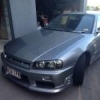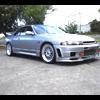Announcements
-
Similar Content
-
Latest Posts
-
Did some baking today, managed to fit it all in the oven. Turned out pretty good. Hopefully it holds up well to a bit of tool abuse. Popped a few pieces on to see what the colours will look like. Pretty happy with how it came up. Now to wait for the rest of the stuff to rock up
-
Connect casually with like-minded individuals on the ultimate dating platform. Authentic Maidens Exemplary Сasual Dating
-
A creative mounting location would be from the roof. We totally need to bring back ludicrous stereo designs from AutoSalon days...
-





![[SKYHI]](http://saufiles.s3.ap-southeast-2.amazonaws.com/monthly_2022_12/DSC00168.thumb.jpg.a90d7ff08652d4dc85ab9b2ff27dade7.jpg)




Recommended Posts
Create an account or sign in to comment
You need to be a member in order to leave a comment
Create an account
Sign up for a new account in our community. It's easy!
Register a new accountSign in
Already have an account? Sign in here.
Sign In Now